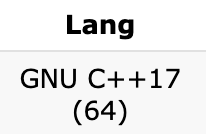What's up y'all.
These past few years I spend an odd week here and there making roguelike-adjacent games. Most of them are mediocre (maybe outright terrible), although I did have one title that had relative success.
Recently, I (re)released my most recent creation — Wizard Chess 2. It's a combination of an encounter-based roguelite (think Slay the Spire) and a tactical battle (think Heroes of Might and Magic). Now look, I know the visuals and UX are, ahem, lacking, but the game has a lot of complexity of the kind that you, fellow competitive programmers, might find appealing. So I thought to invite you to give it a try :)
An imaginary conversation with you:
-Eldar, your css skills are shit
-I know
-And your UX is terrible, I can't figure out what's going on
-Very true. That said, you can watch my shitty tutorial and read the in-game help menus for _some_ info
-What was that about $$$ prizes?
-I'm glad you asked! I'm giving away Amazon gift cards for certain achievements: https://itch.io/t/2392425/-prizes. I swear they are achievable.
-Wait, I have to record a video to prove my results? Don't you already have a high score server?
-Unfortunately, because this is a browser-based game, it's not hard to cheat it in various ways, so a full video of the run is the only cheater prevention I could think of.
-Hey I just got to the first bossfight and the music turned into some demonic howling, wtf?
-Oh I forgot to warn you that I'm a big metalhead, so almost every bossfight has a metal soundtrack. In fact, the idea of playing Septic Flesh's "Pyramid God" during a bossfight compelled me to make this game in the first place.
-Okay you're weird
-I know
If you do give the game try and have a question, or something nice or constructive to say, please drop a note here or in the game's discussion forums. Love y'all <3
















